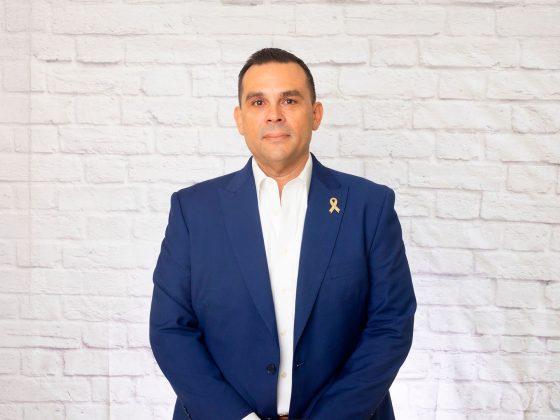Building operational resilience isn’t just about having backup plans and emergency procedures. While businesses scramble to address supply chain issues and navigate economic uncertainty, many are missing the most fundamental piece of the puzzle. Nadine Green, who works with companies across professional services, healthcare, technology, and manufacturing, has seen firsthand what separates resilient organizations from those that struggle when challenges arise.
When Every Day Brings New Surprises
Small businesses across all industries are facing unprecedented pressures, and Nadine Green sees it firsthand. “In manufacturing, ongoing supply chain disruptions and tariffs create a constantly shifting landscape,” she explains. “This volatility makes budgeting and cost containment increasingly difficult.” However, the most significant challenges extend beyond rising costs. While some expenses can be offset through pricing adjustments, broader market disruptions are affecting companies’ ability to bill and recognize revenue promptly, creating cash flow constraints that impact overall business stability.
In the tech sector, companies are grappling with AI compliance, cybersecurity threats, and system resilience. “It’s not if, it’s when, perhaps, you have an incident. How do you respond to that?” Nadine asks. Her healthcare and professional services clients face similar pressure, balancing tight regulations with the need to maintain service quality under resource constraints.
What Most Companies Get Wrong
Here’s where it gets interesting. When Nadine talks to business owners about operational resilience, they usually jump straight to technical solutions and written procedures. But that’s not what makes organizations truly resilient. “I think the biggest thing that they miss is just something fundamental, the culture of their organization and the talent in their organization,” she says. “Taking the time to train them, hold them accountable, and make them part of the organization.”
This realization also came as a surprise to her. “When people meet with me, they often say, ‘Oh, you’re the operations person, the efficiency expert, the process strategist,’” Nadine notes. “It signals to me that there’s a limited understanding of what operations encompasses at a broader, strategic level.” True operational resilience, she explains, is fundamentally about people. “An organization’s resilience is built on the strength of its talent and the deliberate duplication of key roles and responsibilities,” she says. “That way, if someone leaves unexpectedly or an unforeseen event occurs, critical knowledge and capabilities remain within the organization.”
Three Steps on Following a Simple Resilience Plan
Nadine has developed a straightforward approach that works for the companies she advises.
Step One: Regular Assessment Beats One-Time Planning
Many businesses make the critical mistake of developing a plan once and then leaving it untouched. Nadine sees this pattern all too often. “Organizations should be reassessing annually evaluating where they stand and how agile they truly are,” she explains. “One of the most common oversights is executing a plan without revisiting and refining it regularly.” Adopting a mindset of continuous assessment allows companies to stay proactive, addressing potential challenges before they escalate into larger issues.
Step Two: Align Resources with Reality
Following assessment, the next critical step is alignment, a process that requires organizations to identify obstacles to progress and candidly acknowledge gaps in capability. “Alignment begins by asking: what barriers are preventing advancement? Where are the gaps?” Nadine explains. This step challenges businesses to confront uncomfortable realities about their current state. Whether the issues lie in technology, talent, or cash flow, alignment ensures that priorities are clear and that attention and resources are strategically directed, allowing for a smooth transition to the next phase.
Step Three: Activate with the Right Team
The final step is execution, determining whether your current team can deliver or whether strategic external support is required. “Can they execute with the people already on their team, or is there a need to bring in outside partners?” Nadine asks.
Technology is just one example. She points out that managing day-to-day IT operations, such as maintaining systems and supporting users, requires a distinct skill set. In contrast, safeguarding an organization from cybersecurity threats requires a different, highly specialized expertise. True cybersecurity resilience often calls for strategic partnerships that extend beyond the capabilities of internal IT teams.
Beyond technology, Nadine believes the organizations that will thrive are those making smart investments in their people today. “Those who take the time to build a culture of ownership not dependency, will move further, faster,” she predicts.
However, resilience isn’t about perfection. “It’s about having systems in place that create predictability, so when pressure hits, you have a clearer sense of what the future could look like,” she explains. Her advice is to track the right metrics, celebrate incremental progress, and resist the urge to wait for perfect conditions before taking action.
Nadine’s perspective reframes how structure enables agility. “Without systems, roadmaps, and structure, you don’t have agility; you have chaos, especially when pressure mounts,” she notes. “But with a strong foundation in place, you can be agile because you have a base to pivot from.”
In the end, size isn’t what defines resilience. “You don’t have to be the biggest company in the world,” Nadine concludes. “The most resilient organizations are the ones that are best aligned and best structured.”
Follow Nadine Green on LinkedIn to learn how real operational resilience starts with people.










